11 Best first-time Europe itineraries for 1, 2, or 3 weeks
Europe is going to be very busy in the summer of 2024 as the world is back to normal and travel demand is higher than ever. One other key factor is that most European currencies are still hovering at lower levels historically compared to the US dollar, which means that Europe will feel somewhat cheap again this year. In fact, according to our World Backpacker Index, European cities like Lisbon, Madrid, and Munich are about 30% cheaper to visit than Boston, Chicago, and New York City. In other words, flying to Europe might seem expensive, but most things will be cheaper once you get there compared to the costs of visiting a large US city.
Below you’ll find 11 of the most popular and best itineraries for a first visit to Europe. Your first visit is not really the time to be different or creative, and the famous destinations tend to be popular for a reason. In other words, it’s kind of silly to visit, say, Bulgaria, if you’ve not yet been to France or Italy. I lay out the best options along with how long to stay in each place as a general guide. I also discuss Mediterranean cruises, which can actually be an amazing way to see a lot of Europe on your first visit, especially if you don’t like going back and forth to train stations and airports every 2 or 3 days.
For a bit of fun you might be interested in the cheapest 5-star hotels in Europe, which start at US$80 per night for really nice hotels. It helps show that if you choose some of the cheaper cities, you can treat yourself to some luxury that you can’t afford in most other places.
This article was last updated in March, 2024.
There are 11 starter itineraries described in detail below
- Classic London and Paris
- England and Scotland
- Paris and Italy
- Mediterranean cruise
- France, Belgium, and Netherlands
- Paris and elsewhere in France
- Italy
- Spain
- Germany
- Switzerland
- Best of cheap eastern Europe
For each itinerary there are suggestions of other destinations that are easy to add on to the main cities.
Note: This article was most recently updated in March, 2024
Building the best itinerary for your first trip to Europe
Below there are 11 popular itineraries for one week in Europe. If you’ve only got a week then choose one of them and assume you’ll return again to conquer more of this amazing part of the world. If you’ve got more time then you can choose from some of the top add-on suggestions for each one.
Start in the most famous cities
Your first visit to Europe is no time to try to be different or edgy. I recommend that you focus on these 5 great cities before you start branching out into cheaper or more obscure places.
Keep your travel days to a minimum
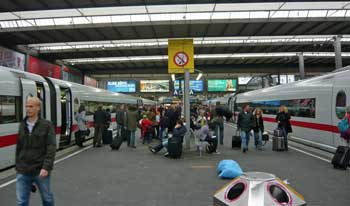
Spend 3 (or 4) nights in almost every major city
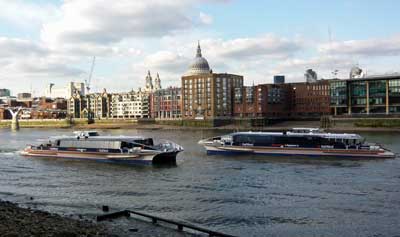
So many first-time visitors are initially planning on spending only 1 or 2 nights in major cities that I wrote a detailed explanation of why 3 nights is ideal for almost all European cities, even if you want to see as much as possible.
3 (or 4) nights will be enough for any city on your first trip
Most first-time visitors are tempted to move too quickly, but it can also be a mistake to move too slowly. It’s really amazing how much you can see in two full sightseeing days. If you spend too long in one city you’ll end up seeing things that are way down your list, while you could be in another city seeing things at the top of your list there.
Choose cities that are easy to reach from each other
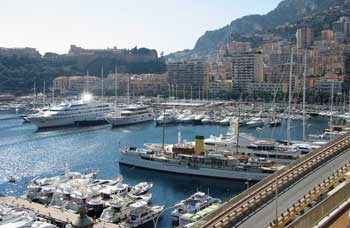
For your first trip it’s best to visit cities that are no more than a 5-hour train ride apart.
Choose cities that are connected by reasonable train rides rather than flights
To build on the point above, finding cheap flights within Europe is easy, but train travel is about a million times more enjoyable and less stressful. You’ll enjoy the train rides almost as much as the cities, so focus on places that are within 5 hours of each other by train.
Start with one of the classic itineraries below, and then add to it if you have more time
If you only have 7 days then you’ll find a list below of classic itineraries that are well-suited to a first visit to Europe. Hopefully you have more than 7 days though, and if you do you can add in one or more of the suggested add-on cities to build an itinerary that appeals most to you.
Best 1-week itineraries for the first time in Europe
Itinerary 1: Classic London and Paris
Fly into either city and take the 2-hour Eurostar train between them
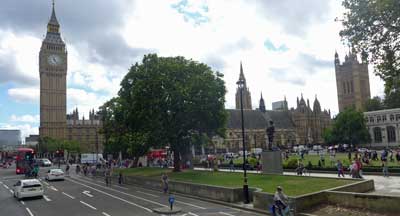
London highlights
- Big Ben and Parliament
- Westminster Abbey and St. Paul’s Cathedral
- Tower of London and Tower Bridge
- West End shows (Broadway equivalent) and classic pubs
- Buckingham Palace and Windsor Castle
Paris is actually far more beautiful than London and the food is famously much better as well. Since Paris gets so many tourists from non-French speaking countries, it’s easy to get by on just English, and the Metro system makes it fast and easy to get around. The architecture of both cities is amazing from the Tower of London, Big Ben, Westminster Abbey to the Louvre and the Eiffel Tower. These cities each pack a huge punch and they are very different from each other as well. Actually, England is arguably the best choice for your first trip to Europe.
Paris highlights
- Eiffel Tower
- Louvre Museum and Museum de Orsay
- Arc de Triomphe and other monuments
- Montmartre neighborhood and Sacré Coeur Cathedral
- Probably the world’s best affordable restaurants and wine
Best add-ons to London and Paris
- Edinburgh (2 or 3 nights, from London)
- Amsterdam (2 or 3 nights, from Paris)
- Bruges and Brussels (2 nights, from Paris)
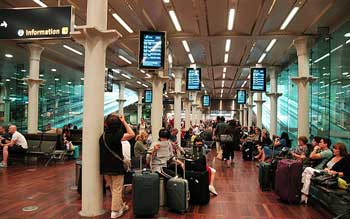
>>>Best one-week London and Paris itinerary in detail
>>>Check London hotel deals
>>>Check Paris hotel deals
Itinerary 2: England and Scotland
- London (3 or 4 nights)
- York (1 night)
- Edinburgh, Scotland (2 or 3 nights)
- Inverness, Scotland (2 or 3 nights)
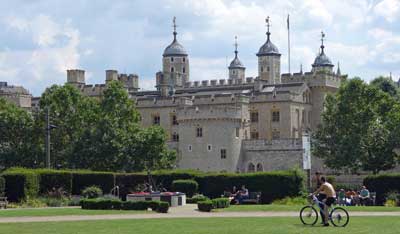
York is a small Roman city with intact city walls and one of the most famous cathedrals in Europe. Edinburgh is not only the capital of Scotland, but it’s easily the second most interesting city in all of Britain. If your time is short, skip York and spend more time in Edinburgh.
If you prefer to focus on the south of England on your first trip then the best option is to go to Bath or nearby Bristol after London. Bath is another of England’s top destinations and it’s a gorgeous city that has been a spa resort for many centuries. It’s also reasonably close to Stonehenge. You can also easily get to Cornwall in England’s southwest corner from Bath, and that’s a whole different and fascinating experience (with nicer weather than up north).
If you’ve got more than a week and want to spend more time in Scotland, especially in the summer months, the place to head to is Inverness. It’s a small town that is considered the gateway to the Scottish Highlands, but it’s an interesting and charming place on its own. You can take day-trips by bus to the highlights of the Highlands including the Isle of Skye and Loch Ness. Between you and me, it’s better to minimize time in Loch Ness or skip it altogether because it’s not one of the more photogenic parts of Scotland and the monster has always been a hoax.
Travel times between the recommended places
- London to York by train: 2 hours
- York to Edinburgh by train: 2.5 hours
- London to Edinburgh by train: 4 hours
- Edinburgh to Inverness by train: 3.5 hours
- London to Bath by train: 85 minutes
Best add-ons to England and Scotland
If you think you want to spend your whole trip in Britain you should have a look at our article on the best itineraries in England, Scotland, and Wales.
>>>Check London hotel deals
>>>Check Edinburgh hotel deals
Itinerary 3: Paris and Italy
- Paris (3 or 4 nights)
- Venice (1 night)
- Florence (2 or 3 nights)
- Rome (3 nights)
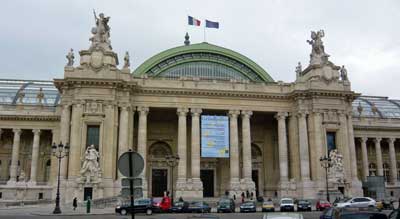
From Paris you can easily fly to Venice (or nearby Treviso) where you should try to spend about 24 hours. Venice is small enough to see in a full day, and so crowded that most people are satisfied to leave after that day. The key is to stay in the main part of the main island so you can enjoy Venice before the cruise passengers and day-trippers arrive, and also after they leave for the day. Two nights in Venice would not be wasted time, and it’s possibly the most gorgeous city in the entire world, but you can see the best of it in a bit over 24 hours.
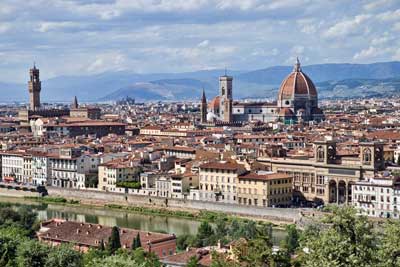
Rome also lives up to the hype and spending a day in the Vatican City will be a highlight even for non-Catholics, but it’s also a crowded and busy city so three days is usually enough for most people. Similar to Paris, Rome is an unusually beautiful city from almost any angle when you are in the historical center. You’ll walk through a stunning piazza (town square) and then turn a corner and you’ll see gorgeous buildings or public statues that are as nice as anything in the museums. Seriously, it’s worth a visit.
Paris to Venice flight: 1 hour 35 minutes
Venice to Florence by train: 1 hour 53 minutes
Florence to Rome by train: 1 hour 16 minutes
You can of course instead fly from Paris to Rome and then go north to Florence and then to Venice and fly home (or back to Paris) from there, and it would be just as enjoyable.
Best add-ons to Paris and Italy
France
- Nice/Cannes/Monaco (2 or 3 nights)
- Avignon (2 nights)
- Bourges (2 nights)
- Bordeaux (2 nights)
- Aix-en-Provence (2 nights)
- Reims (2 nights)
- Dijon/Burgundy (2 nights)
Italy
- Milan (1 or 2 nights)
- Lake Como (2 nights)
- Siena (2 nights)
- Cinque Terre (1 night)
- Naples/Sorrento/Amalfi Coast/Pompeii/Capri (3 to 5 nights)
- Sicily (3 to 4 nights)
>>>Much more information in this article about the best France and Italy itineraries
>>>Check Paris hotel deals
>>>Check Venice hotel deals
>>>Check Florence hotel deals
>>>Check Rome hotel deals
Itinerary 4: Mediterranean cruise
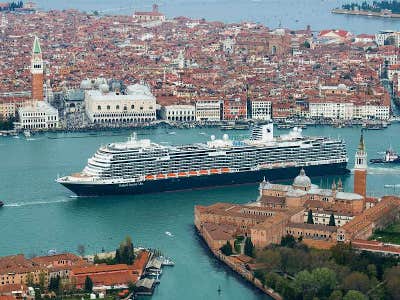
In spite of the reputation of cruises to be floating buffets, they can actually be an excellent way to visit a great number of amazing European cities in a short time. The ship typically is in port from the early morning until mid evening, often giving you the opportunity to have dinner in the city (unlike Caribbean cruises). Better still, the cruise ports are often near the center of town, so you can just walk off the ship and do sightseeing on foot or by public transportation.
Mediterranean cruises usually start at 7 nights but can go up to 3 weeks, which can provide an amazing tour of the entire region without having to pack and repack your bags more than once. They also can provide excellent value, especially compared to the price of taking trains or flights and finding new hotels in every destination.
Most popular Mediterranean departure ports
Barcelona, Spain – It’s an easy port to reach. Ships generally go from Barcelona with stops in France and then Italy.
Rome (Civitavecchia), Italy – The port isn’t very close to Rome, but it’s easy to get back and forth. Ships go west to France and Spain as well as south around the tip of Italy and then on to Croatia, Venice, and to Greece.
Venice, Italy – The cruise ships no longer dock close to the best tourist areas, but it’s easy enough to visit Venice for a day or two before boarding a ship. Ships starting in Venice go south and then head west and to Rome and then to France, or they go south to Croatia and then head east to Greece.
Athens, Greece – The cruise port of Piraeus is just south of Athens and easy to reach. Ships from Athens usually head west towards Croatia, Italy, France, and Spain, but there are also ships that visit Greek islands and Turkey.
>>>Check for deals on Mediterranean cruises
Alternative to consider: a river cruise
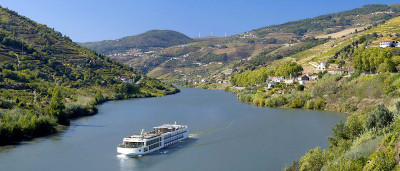
Amsterdam, Budapest, and Prague are some of the most popular river cruise ports, but there are dozens of others including many smaller towns in France where few other tourists will be when you stroll off the ship. There is little or no entertainment on the river cruise ships, but passengers don’t miss it because the entire day and into the evening is spent just steps from local cultural offerings and restaurants.
>>>Check for Europe and river cruise deals
Itinerary 5: France, Belgium, and Netherlands
Paris to Brussels: 1 hour 22 minutes
Brussels to Bruge: 58 minutes
Bruges to Amsterdam: 2 hours 45 minutes
Amsterdam to Paris: 3 hours 17 minutes
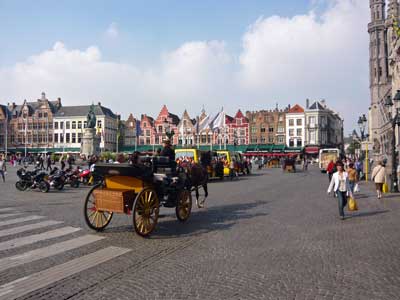
Spending 4 nights in Paris and 3 nights in Amsterdam would be a great trip, but if you want to see something else you’ve got a couple options in between. My advice is to spend an afternoon looking around the Grand Place (main square) in Brussels and then hop a 58-minute train ride to Bruges for a night or two. Brussels isn’t a great tourist city, but Bruges really is so it’s a better option for most people. Whatever you choose out of this group, you can be back in Paris on another high-speed train for your flight home.
Best add-ons to France, Belgium, and Netherlands
- Luxembourg City (1 or 2 nights)
- Cologne, Germany (1 or 2 nights)
- London (3 or 4 nights)
- Interlaken, Switzerland (2 or 3 nights)
>>>Check Paris hotel deals
>>>Check Bruges hotel deals
>>>Check Amsterdam hotel deals
Itinerary 6: Paris and elsewhere in France
- Paris (3 or 4 nights)
And a choice of:
- Nice/Cannes/Monaco (2 or 3 nights)
- Avignon (2 nights)
- Bourges (2 nights)
- Bordeaux (2 nights)
- Aix-en-Provence (2 nights)
- Reims (2 nights)
- Dijon/Burgundy (2 nights)
- Normandy (2 nights)
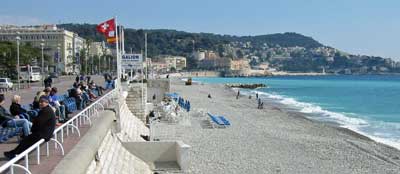
While Nice is a wonderful tourist city for a look at the French Riviera, the other larger cities of Lyon and Marseilles are probably better saved for a future trip because they are light on key sights compared to many smaller towns. Wine lovers can rent a car or take trains into Bordeaux or Burgundy. Since you can get between most of these towns by train in 2 hours or less, spending only 2 nights in each one is a reasonable option if you want to see a lot in a short time.
Normandy is an interesting choice and easy to reach in only about two hours by train from Paris. Some visitors like to see the famous WWII beaches and memorials, while others (especially in summer) like to check out one or more of the beach-resort towns. Deauville is one of the more famous of those, and it’s also famous for its horse race track and as one of the epicenters of the industry in Europe.
Best add-ons to Paris and elsewhere
- More France, of course
- London (3 or 4 nights)
- Interlaken, Switzerland (2 or 3 nights)
- Amsterdam (2 or 3 nights)
>>>Check Paris hotel deals
>>>Check Nice hotel deals
Itinerary 7: Italy
Rome to Florence: 1 hour 16 minutes
Florence to Venice: 1 hour 53 minutes
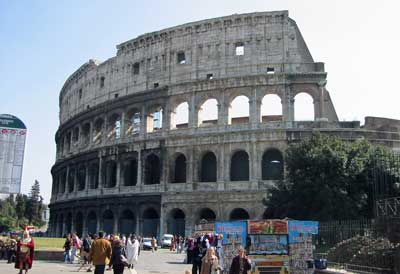
Venice is small enough that you can see the main sights in about 24 hours, and it’s so insanely crowded that many people tire of it after about a day as well. It’s better to pay more for a hotel to be on the main island and visit quickly than to save money with a hotel on the mainland where you’ll be in crowds going back and forth as well. Florence is the most relaxing of the 3, and also a great base for side trips to Pisa, Siena, and Cinque Terre, just to name a few.
Going to Italy? Here are the best first-time Italy itineraries for 3 days to 2 weeks (in much greater detail)
Best add-ons to Italy
- Milan (1 or 2 nights)
- Lake Como (2 nights)
- Siena (2 nights)
- Cinque Terre (1 night)
- Naples/Sorrento/Amalfi Coast/Pompeii/Capri (3 to 5 nights)
- Sicily (3 to 4 nights)
>>>Check Rome hotel deals
>>>Check Florence hotel deals
>>>Check Venice hotel deals
Itinerary 8: Spain
Madrid to Barcelona: 2 hours 30 minutes
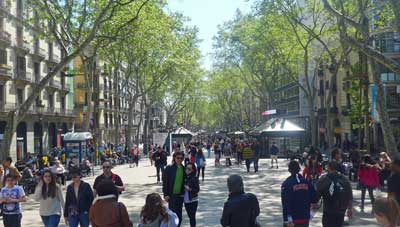
A huge part of Spain’s tourism industry is built around its southern beaches and islands such as Ibiza, Mallorca, and Tenerife (in the Canary Islands). For most people it’s best to ignore those places on your first trip because none of the beaches are special enough to spend days on them compared to the culture of the cities.
Best add-ons to Spain
By popular demand, I’ve added a full article on where to go in Spain with itineraries from 7 to 10 days up to two weeks.
>>>Check Madrid hotel deals
>>>Check Barcelona hotel deals
>>>Check Lisbon hotel deals
Itinerary 9: Germany
Berlin to Munich: 6 hours 2 minutes
Munich to Rothenburg ob der Tauber: 2 hours 56 minutes
Munich to Füssen: 2 hours 4 minutes
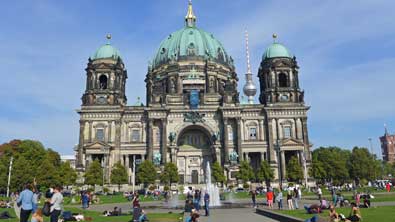
Those two cities are the keys to a Germany visit, and after that you’ve got a wide variety of choices. I cover most of the popular choices in my article on where to go in Germany, which covers several smaller towns that are major highlights.
Best add-ons to Germany
- Cologne (1 or 2 nights)
- Hamburg (2 or 3 nights)
- Amsterdam (3 nights)
- Prague (3 nights)
- Salzburg (2 or 3 nights)
- Vienna (3 nights)
- Interlaken, Switzerland (3 nights)
- Lucerne, Switzerland (2 or 3 nights)
>>>Check Berlin hotel deals
>>>Check Munich hotel deals
Itinerary 10: Switzerland
- Interlaken (3 nights)
- Bern (1 night)
- Lucerne (3 nights)
Zurich Airport to Interlaken: 2 hours 10 minutes
Interlaken to Bern: 53 minutes
Bern to Lucerne: 1 hour 50 minutes
Lucerne to Zurich Airport: 1 hour 3 minutes
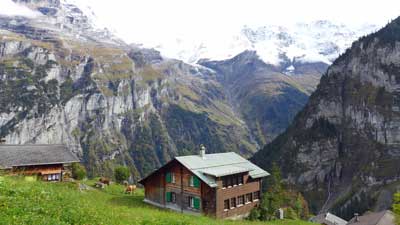
Interlaken is the best hub for the most dramatic Alps views and experiences. The one-hour cable car ride up to the Schilthorn observation deck is something you’ll never forget, and the only thing that might be more dramatic is the train ride up to the Jungfraujoch station, which is the highest in Europe. Lucerne is almost as beautiful with a scenic lake at its heart and also great mountaintop views nearby. If you do want to see a Swiss city then the capital of Bern is the most interesting and photogenic on a short visit. Read more about where to go in Switzerland for even more ideas.
Best add-ons to Switzerland
>>>Check Interlaken hotel deals
>>>Check Lucerne hotel deals
Itinerary 11: Eastern Europe’s best cheap cities
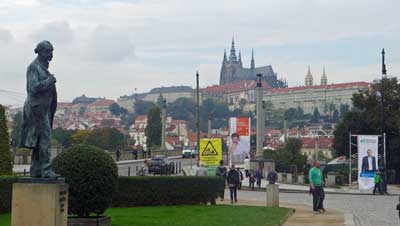
Each of these cities is beautiful and historic, but English is less widely spoken so they can also be quite a bit more challenging for a first-time visitor. Another difficulty is that the trains between them are still quite slow compared to the high-speed rail in the West, so it takes most of a day from one to another, and a bus is often a better choice. I cover this best cheap Europe itinerary more fully in the linked article.
Prague to Budapest: 6 hours 41 minutes
Budapest to Krakow: 9 hours 54 minutes (flying might be better)
Best add-ons to cheap Eastern Europe
- Cesky Krumlov, Czechia (2 nights)
- Ljubljana, Slovenia (2 or 3 nights)
- Split, Croatia (3 nights)
- Belgrade, Serbia (2 or 3 nights)
- Sarajevo, Bosnia and Herzegovina (2 or 3 nights)
- Sofia, Bulgaria (2 or 3 nights)
>>>Check Prague hotel deals
>>>Check Budapest hotel deals
>>>Check Krakow hotel deals


Hey Rodger,
My girlfriend and I are planning to go to Europe at the end of September (first Europe trip). We have always wanted to see Germany and attend Oktoberfest. We know we want to see Berlin and Munich but are unsure on what else we would like to see. Our trip will be 7-10 days. Do you have any suggestions on other places to see? Some places I was thinking were other cities in Germany, Belgium, Amsterdam, Prague or a town in Switzerland or Austria. We would like to make the most of this trip but don’t want to rush through each city. How many different places do you think we could see in 7-10 days without being rushed?
Chris,
My strong recommendation is to spend 3 nights in almost any city you visit, so in 7 to 10 days you could hit 2 to 4 total cities. For Oktoberfest it’s best to book your hotel as soon as possible. Hotels (and even hostels) can triple their normal rates during those weeks, so your best chance of finding something reasonable is to book early. You might just stay one night in Munich (to avoid paying a fortune for hotels) and you can take a 90-minute train ride to Salzburg in the evening. Also, it’s wise to reserve places in the beer tents before you go. Without a reservation you have to stand in long queues that move very slowly.
Have at least a scan of my article on where to go in Germany. It should give you some other ideas. Amsterdam is a great choice since it’s a fairly fast (5.5 hour) train ride from Berlin. Spending 2 or 3 nights in the Interlaken area of Switzerland could also be a great choice. Prague is a convenient stop in between Berlin and Prague as it’s about 4 or 5 hours by train from both of them.
Those are your best choices in my opinion. It really depends on how long you’ll be able to stay and which places appeal to you most. I think Amsterdam to Berlin to Prague to Munich would be a great trip, but of course Switzerland has the most dramatic scenery so that might appeal to you even more. Let me know if you have any other questions. -Roger
Hi Roger,
My hubby and I are flying to Europe this September, we fly out from Australia to London on the 4th September and fly out from London back to Australia 1st October.
We are spending the first 6 nights in London with family members, then heading to Italy for 7 nights, thinking 5 nights in Rome and 2 nights in Venice (Possibly with family members).
Is 5 nights to long in Rome?
After this we are travelling by ourselves for 13 nights and are yet to agree on an itinerary.
Prague and Paris are must sees, 3 nights in each. I was hoping for Munich but have reconsidered as it’ll be Oktoberfest. Where do you suggest we visit and what is the best transport between each of these countries, train or plane?
We were hoping to visit 4 countries in these 13 nights.
This is our first time in Europe. I haven’t booked any accommodation or transport between countries as yet, should I be worried as there’s under 4 months until we go?
We are in our early 50’s and love walking around sightseeing.
Can you please help?
Thank you
Susie,
I’ll take your questions in order. Yes, I think 5 nights in Rome is a bit too long. Rome is a beautiful and fascinating city, but you can see the main sights in 3 days and the city is quite hectic so most people are happy to move on once they’ve seen the major highlights. I’d head to Florence for two nights in between Rome and Venice, which makes for short train rides between all of them.
Prague and Paris are both great destinations for first Europe trips. You’ve got some really good choices in between them, so it’s just a matter of which appeals to you most. If you went north you could go from Paris to Amsterdam to Berlin and to Prague and all on fairly fast and comfortable trains. If you went south you could go from Paris to Switzerland (Interlaken) and then to Vienna and then to Prague. Or you could go from Paris to Salzburg to Vienna to Prague. Salzburg is a really wonderful small city on the edge of the Alps. It’s not as spectacular as the Interlaken views, but it’s a wonderful city and also cheaper than Switzerland. You could also substitute Cesky Krumlov for Vienna if you want to include a smaller town.
If you did it in reverse it might be better because you could fly from Venice to Prague and then when you reach Paris you can take the Eurostar train back to London for your flight home. In general, trains are FAR more pleasant and comfortable compared to flying around Europe, and they usually save time as well compared to getting to and from the airports and showing up early to get through security on time and so forth.
It’s best and cheapest to book your flights as early as possible, as the fares typically start out cheap and go up as more seats are sold. The same is true of your train tickets, although those don’t typically go on sale until 3 or 4 months out anyway, so buying them two months before your trip should be early enough to get the best fares.
I really like to book my hotels as soon as I’m sure about the trip. Most hotels allow for free cancellation until shortly before your stay anyway, so there isn’t much risk. The reason I like to book fairly early is that the best hotels in each city tend to sell out weeks or sometimes months in advance. I have recommended hotels on this website for each of the cities that you’ll be staying in, which might help you at least choose neighborhoods. You can make hotel reservations shortly before you leave, but you’ll probably pay a bit more for a less desirable hotel if you wait a long time. Let me know if you have any other questions. -Roger
Hi Roger,
I’m planning to go to Europe for a honeymoon, somewhere in January for around 14 days.
The country would be Italy (Rome, maybe Positano, Florence are in mind), but I wanted to visit other countries if possible.
Do you have any recommendation on countries/cities to visit?
thanks
Emti,
Italy will be fairly chilly in January, of course, but it’s warmer than most of the rest of Europe so it’s a good choice if you are going that month anyway. As for where to go specifically, I get that question a lot so I wrote a long article on where to go in Italy in two weeks.
One challenge is that the beach towns and lake areas are very seasonal and many hotels and restaurants are shut down for the winter. This includes Positano and the rest of the Amalfi Coast as well as Cinque Terre and Lake Como. Now, you can visit and there will be open hotels and restaurants, but it’ll be VERY quiet that time of year. I’d probably focus on the cities, as those will be pleasantly quiet as well because there are so few other tourists.
You could easily spend two great weeks in Italy and still have things you wish you had time to see, but if you do want to include another country the easiest would be to fly to Paris for 3 or 4 days. Needless to say, Paris is an excellent honeymoon choice and the winters there are mild so you’d enjoy it. Or you could go to Spain, although you’d have to fly there as well. I’d focus mostly on Italy and if you really want to add one more thing in I’d do 3 or 4 nights in Paris. Let me know if you have any other questions. -Roger
Hi,
My family and I are planning a 10 day trip to Europe starting in London-Paris-Milan-Rome-Venice-London. What is our best way to go about this? WE will already be in London visiting Family, so we are not looking for any flights into London and I know that Paris is probably the city to start with but aside from that, no clue. Also what is the best site to get quotes and help?
Thank you
Bernadette,
If your 10 days doesn’t include London itself, you should be in good shape. You can do most of this by train and that will be an enjoyable part of the experience. From London you can reach Paris on the Eurostar train, which takes a bit over two hours. Spend 3 nights in Paris and then it’ll be best to fly to Italy. Actually, Milan isn’t much of a tourist city so most people instead choose Florence as their third Italy stop. If you have specific things you want to see in Milan then that will be good, but if you want the best 3 cities in Italy it’s probably better to go with Venice, Florence, and Rome.
So fly from Paris to either Milan or Venice. If you choose Venice you can enjoy the city in 24 to 48 hours. It’s an amazing place that is unlike any other place on earth, but it’s also very crowded and compact, sort of like a theme park. After a day or two you’ll be ready to move on, and very happy that you visited. Another nice thing is that Florence is right between Venice and Rome, so you can get between them in train journeys that last two hours or less. I’d spend two or three nights in Florence and then three nights in Rome, and then fly back to London from there.
With those short flights or train rides, the early you buy them the cheaper they will be, and that includes the Eurostar train. It’s best to buy the train tickets from the official rail websites of the countries involved. As for the flights, I’d shop around on Skyscanner and Momondo, which a both European specialists. Let me know if you have any other questions. -Roger
Hi Roger,
Thank you so much for your reply! I just found out that since I’m not a US citizen yet, I would have to get another Visa for London since it is not part of the Schengen Visa. Is London really worth a visit or do you have any recommendations to what other country should we add? Thank you much!
Johanna,
London is pretty amazing and most people agree that it lives up to the hype, and I don’t think the visa is too difficult to get. That said, you can always visit London on another trip. You could instead fly into Amsterdam and then after three days take a train to Paris for three days and then take a train to the Interlaken area in Switzerland for a few days of amazing Alps views, and then a train to Venice and then to Florence and then to Rome. That way you could skip the flight to Venice and instead take the extremely scenic train ride through the Alps to Milan and then on to Venice. Adding in scenery between city visits can be really nice because going from one big city to another can get a bit stressful after a while. Let me know if you have any other questions. -Roger
Hi Roger!
Ive been reading some of your input to other travelers and was wondering if you could help me put together a good travel plan! I have 13 days well 12 because I’m flying from the states. It will be me my husband and my 1 year old. Its our first time going to Europe. We are flying in to London and out of London. We have narrowed it down to London, Paris, Switzerland, and Rome. We want to see as much of Switzerland as possible since its our number 1 on our bucket list. We were thinking flying into London (3 full days) then to Paris (1 day) then switzerland(3/4 days) head to Rome(2 days)then fly from Rome to London for our flight back. I want to make sure I include time to travel in between destination so just in case I will say 2 days cause I know from switzerland to Rome by train is roughly 8 hours. Please give me some advice and input! I want to see as much as possible but also don’t want to rush! Thank you.
Bree,
If you’ve got 12 days and nights to spend it would be a shame to only spend one night in Paris and two nights in Rome, especially if this is your first trip to Europe. As I mention so often, three nights is the optimal amount of time to spend in each place if you are trying to see as much as possible. It’s hard to do much sightseeing on your arrival or departure day, so you see almost nothing on a stay of just one night.
Switzerland is indeed amazing, but you’ll be able to see a lot in three nights there, or perhaps four if you prefer. You might have a look at my article on where to go in Switzerland for some ideas. You could do London for three nights and then take the Eurostar train to Paris for three nights and then a train to Interlaken for 3 nights and then a train to Rome for your final 3 nights. The train from Interlaken to Rome takes about 6.5 hours and requires 2 or 3 changes, but the portion going through the Alps is really gorgeous and worthwhile. Taking a train from Interlaken to Zurich Airport and then flying from there to Rome would take about the same amount of time and be far less enjoyable.
If you had to cut a night off Paris or Rome I would cut it from Rome. Paris is really a magical place and it’s quite pleasant. Rome is also really amazing, but it’s also quite hectic and exhausting, so leaving yourself just one full day to see the top sights on your list would be enough. By the way, most of the cheaper flights from Rome to London will land in Luton or Stansted or Gatwick, and your flight home will probably be out of Heathrow. Getting between those airports is a huge hassle so it’s better to pay a bit more for a flight into Heathrow. I hope this helps. Let me know if you have any questions. -Roger
Hi Roger,
Thank you so much for your article! This will be our first time travelling Europe. 2 adults, a 14yr old and a 6month old baby.
What should be our itenerary if we have these places?
London, paris, Amsterdam, rome, florence and venice. Also, is Bavaria too much to add? I just like fairytale like places. Is rome a great place to visit? I have been to Getty center in L.a and I feel like rome just looks like that. Will it be hard since we have our 6month old baby? Please help. Thank you!
We can do 2 or 3 weeks for this trip
Johanna,
I’ll be happy to try to help. First off, Rome is amazing and (I’m from Los Angeles) it looks nothing like the Getty Center (and I’m a big fan of the Getty Center). Generally you’ll want to spend 3 nights in any city that you visit, and I think it’s even more important with an infant in tow. Venice is compact enough to see in 24 hours or so, but it’s not the most stroller-friendly city because of all the stairs and bridges. Still, you could enjoy a quick visit there and Venice is unlike anything else on earth.
The most efficient way of doing those cities you have in mind would be to fly into London and then take the Eurostar train to Paris and then take the high-speed train to Amsterdam. Then fly to Venice and after 24 hours or so take a train to Florence and then take a train to Rome. If you spent 3 days in each city except only one night in Venice that would be 16 nights. Bavaria would be quite out of the way so I’d save it for another trip. All of the places you’d be going are filled with fairy tale sights, so you wouldn’t miss Bavaria.
Generally speaking, Europe is very family friendly and most public transportation has places for strollers and the trains even have changing rooms on most carriages. So the main concern would be finding places where pushing a stroller is easy enough. Most of the cities on your list are flat and have wide sidewalks so you are in luck there. Venice, as mentioned, can be tricky, but as long as you book a hotel off a main walkway or square you should be okay. Rome is also hilly in a few places, but they aren’t too steep and you should be able to push a stroller around pretty easily.
If you want to go for more than 16 nights I’d add a day to London and/or Paris. Let me know if you have any other questions. -Roger
OMG Roger, reading you block make me so happy and I started thinking about going to Europe. I went to Russia for soccer world cup and now I wish to visit Madrid, Barcelona, Paris (perhaps Amsterdam) and London. Flying from Los Angeles. From August 9 to August 24..please, please let me know your thoughts. (husband, wife and 20 years old daughter.)
Stella,
I’m glad I’ve helped inspire you. If you’ve got 14 or 15 days (in case you land on August 10), you’ll have time for five cities. The most efficient way of doing this would be to fly into London and then take the Eurostar train to Amsterdam (or you could fly, but the Eurostar is MUCH more interesting and enjoyable). Then take the high-speed train from Amsterdam to Paris (a bit over 3 hours), and then the high-speed train to Barcelona and then to Madrid. Three nights in each city is ideal, and if you only have 14 nights I’d probably cut Amsterdam back to two nights because it’s the smallest of the five cities you’ll be visiting. If you can fly home from Madrid that would be best, but usually it’s much cheaper to fly in and out of the same city so you could book a morning flight from Madrid to London for your flight home from there.
One thing to watch for though is that flights from Madrid to London are usually cheapest into London’s smaller airports and your flight home will almost certainly be out of Heathrow. Getting between London airports is very time consuming so I’d pay a bit more and fly from Madrid into Heathrow (or Gatwick if that’s where your flight home leaves from). Let me know if you have any other questions. -Roger
Hello Sir,
I came to your page while searching about Europe’s must visit countries, travel and more.I am from India and planning to visit Europe somewhere in Sep-Oct 2019. I have roughly 15 days with me and I am interested for the mentioned countries:
Paris
London
Amsterdam
Italy
Switzerland
Austria
Spain
I have gone through above threads and understand I need to choose 5 cities to roam around considering my travel time. However, I am getting confused, which country to skip and which one to include, depending on climate, food, culture & scenic beauty. I am not interested for beaches, and I want to enjoy scenic beauty most.
Could you please provide your suggestions, so that I can plan trip by my own ?
Any information you would like to share is highly appreciated. Thanks.
Shashank,
As far as pure scenery is concerned, Switzerland is the best place to focus, although it is quite expensive. But if you also are referring to ‘beautiful cities’ then you’ll want to visit Paris, Amsterdam, and Venice. I’d save Spain for a future trip, and probably Austria as well, although parts of Austria are really lovely such as Salzburg.
In the article above I link to another article that might interest you about what I consider to be the five great cities in Europe to focus on. They are London, Paris, Amsterdam, Rome, and Venice. One quick and great itinerary would be to fly into London and spend 3 days there before taking the Eurostar train to Paris for three days. Then take a high speed train to Amsterdam for 3 days and then a flight to Venice where you’ll stay for about 24 hours (it’s small and crowded so a quick visit is ideal for most people) and then a train to Florence for two days and then a train to Rome for your last 3 days. All of those cities are really amazing and quite beautiful.
I hope this helps. Let me know if you have any other questions. -Roger
Hi Roger, my husband and I going to be traveling with our 21 year old son April 30 and plan to travel to Amsterdam, London and Paris for 2 weeks. However with the upheaval in England due to brexit and the yellow vests in France we are considering changing our destinations. Any suggestions on where to go and be able to travel affordably given the late change. This would mean finding lodging and travel and new places to visit in lieu of London and France. Im considering expanding to Belgium and Germany but haven’t done any research. We currently fly in to Amsterdam and fly out of Paris. Any suggestions you have are most welcome. Thank you!
Lisa,
Personally, I would not hesitate to visit London and Paris with what is going on in each. The Brexit thing might seem chaotic on the news, but even that huge protest over the weekend was very peaceful and also planned in advance and easy to avoid if you prefer. The Yellow Vest protests in France have had a bit of violence and it’s definitely recommended to avoid those, and fortunately that is extremely easy to do. Again, they announce the location and timing of the protests in advance, and they are very contained and localized. I haven’t heard any problems by tourists, except that maybe they have to visit the Arch de Triomphe on a different day. If this is your first trip to Europe I can understand why you might be nervous because nearly ALL of the news you see from these cities are protests, but both are huge cities that continue to be very civilized except for the small things that end up on TV.
That said, after Amsterdam you could visit Bruges for a few days, although it will remind you of Amsterdam because they were built during the same era. You might take a scan of my article on where to go in Germany to see if any of it sounds interesting to you. Unfortunately, except for Cologne, getting from most of the better places in Germany by train takes quite a bit of time. For example, from Munich to Paris it’s 8 hours by train, and that is a bit longer than I prefer for a single ride, so flying would be better.
You could go to Switzerland, which is convenient by train to or from Paris. Have a look at my main article on where to go in Switzerland for some ideas, especially about the Interlaken area.
But again, I’d still do London and Paris. Seriously, all you’d have to do is ask the front desk person at your hotel if there are any places to avoid that day and they will probably say “no” and you’ll be totally fine. Let me know if you have any other questions. I know both cities well and I’m happy to try to help. -Roger